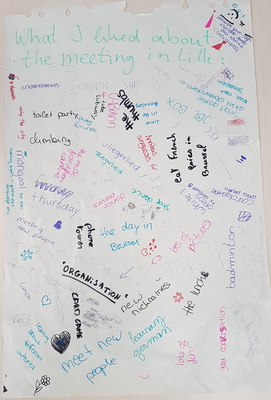The meeting in Istanbul took place between the 16th and 22 October 2022. There we could get to know the Turkish culture and make new friends under the motto “Happier Youth in a Healthier EU”.
On October 16, the trip started with the flight to Istanbul. By the evening, each of us could meet our host family at dinner.
On the first morning in Turkey we met all the participants of the Erasmus program from France, Germany, Spain, and the Netherlands and were warmly welcomed by the Turkish school. In the early afternoon, we all watched the movie “The Cure” together in English.
Tuesday started with a relaxing boat tour. From the water we could discover many sights. Since the boat was chartered for our whole group, we played music on the deck and got to know Turkish dances. Later we visited a typical Turkish Spice Bazaar.
The third day consisted of many cultural sights such as Topkapi Palace, Hagia Sofia, Cister Basilica and the Grand Bazaar. At the Grand Bazaar we could taste and buy typical Turkish specialties.
We started Thursday at the Eyüp-Pierre Loti, a viewing platform over the Bosphorus. As the day progressed, we got to see the Galata Tower and Dolamabahce Palace.
We spent our last full day with our host families, saying goodbye to everyone with a big party at the school in the evening. Before that, we worked some more on our project, collecting ideas on what is important in friends and friendship. We used these results to work together and create a chain of friendship.
On Saturday morning, it was time to say goodbye to our host families. This was not so easy, many tears were shed – but also reciprocal invitations were extended, so that we might be able to visit each other again privately in the future.
On our return flight, we realized what a wonderful time we had, with all the Turkish traditions and how many beautiful friendships we had made.































